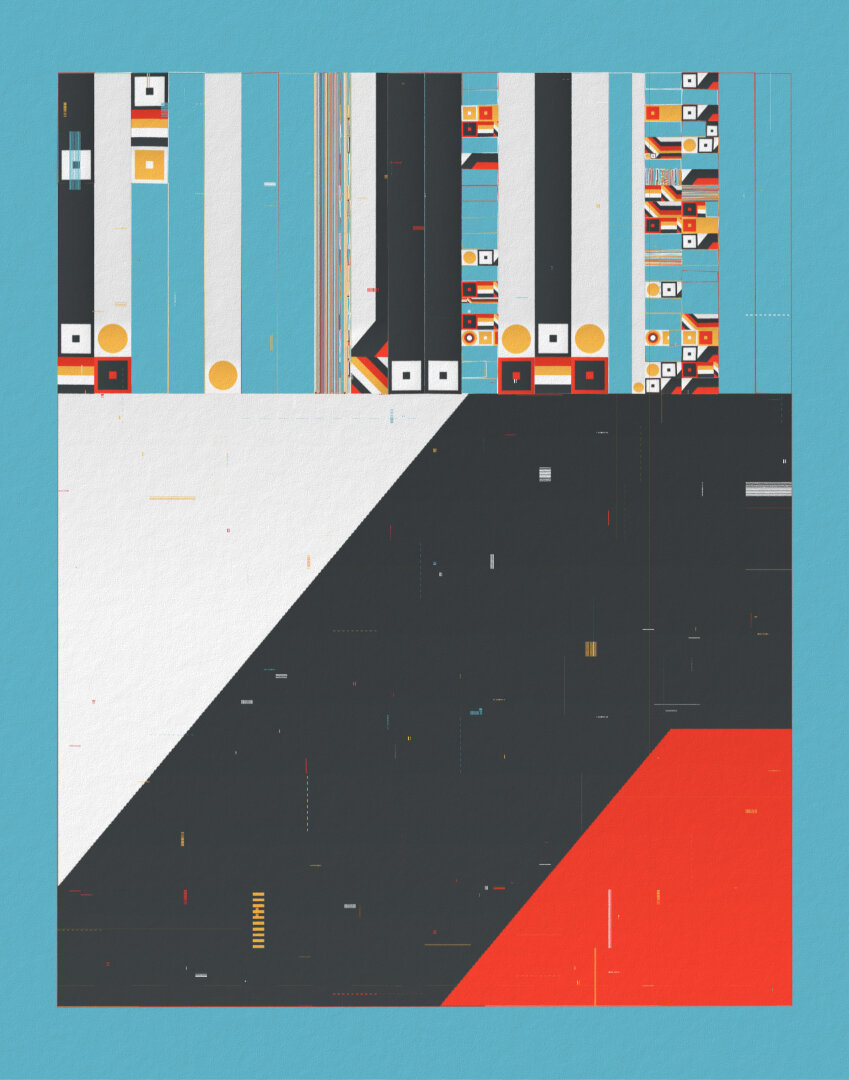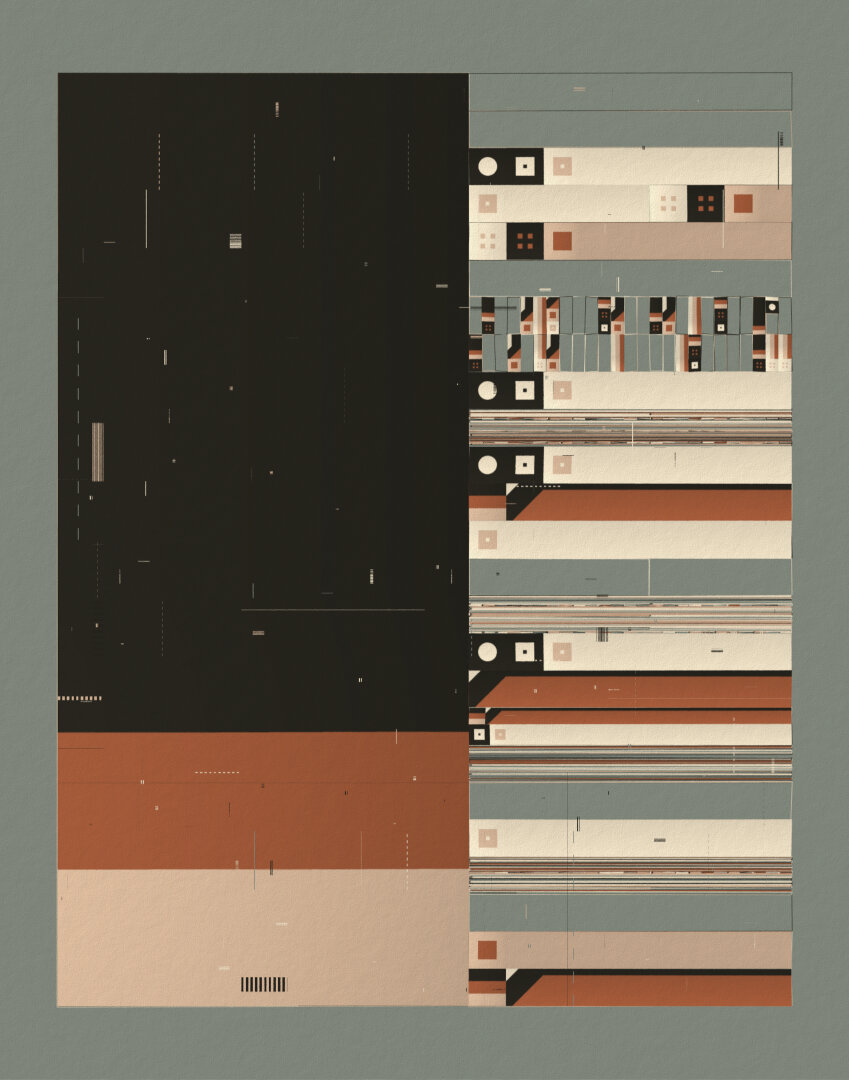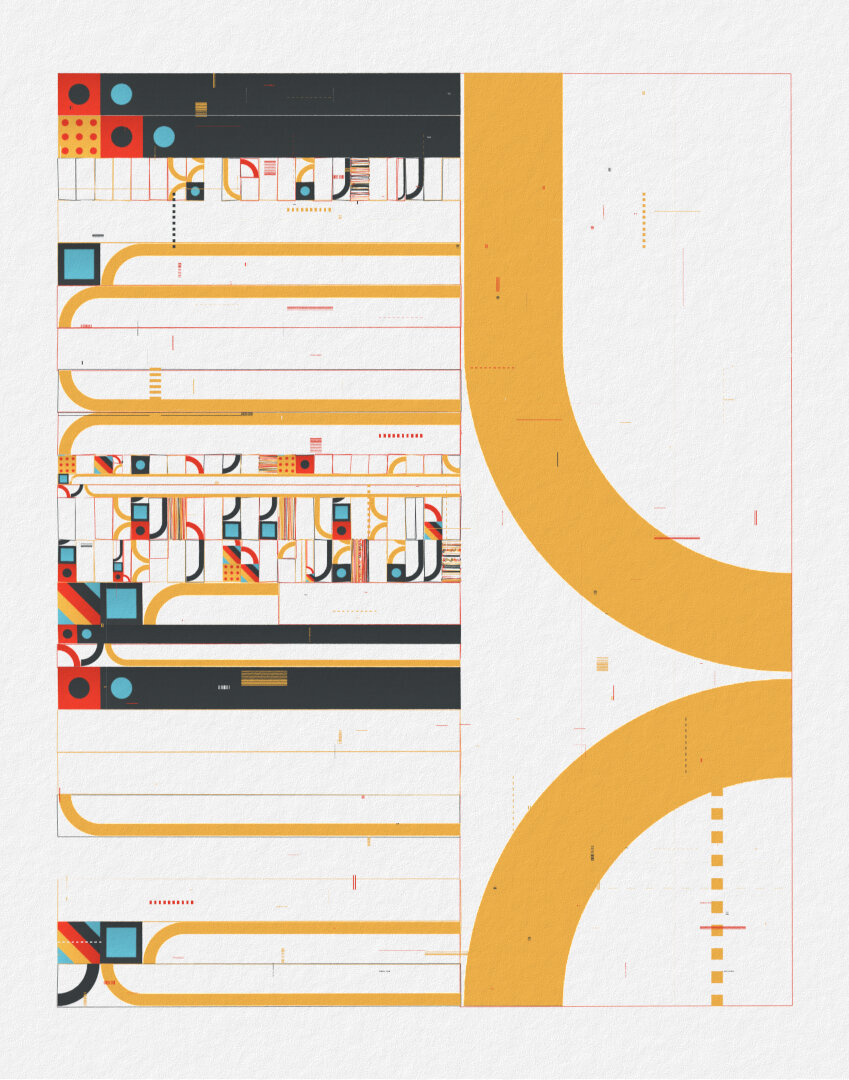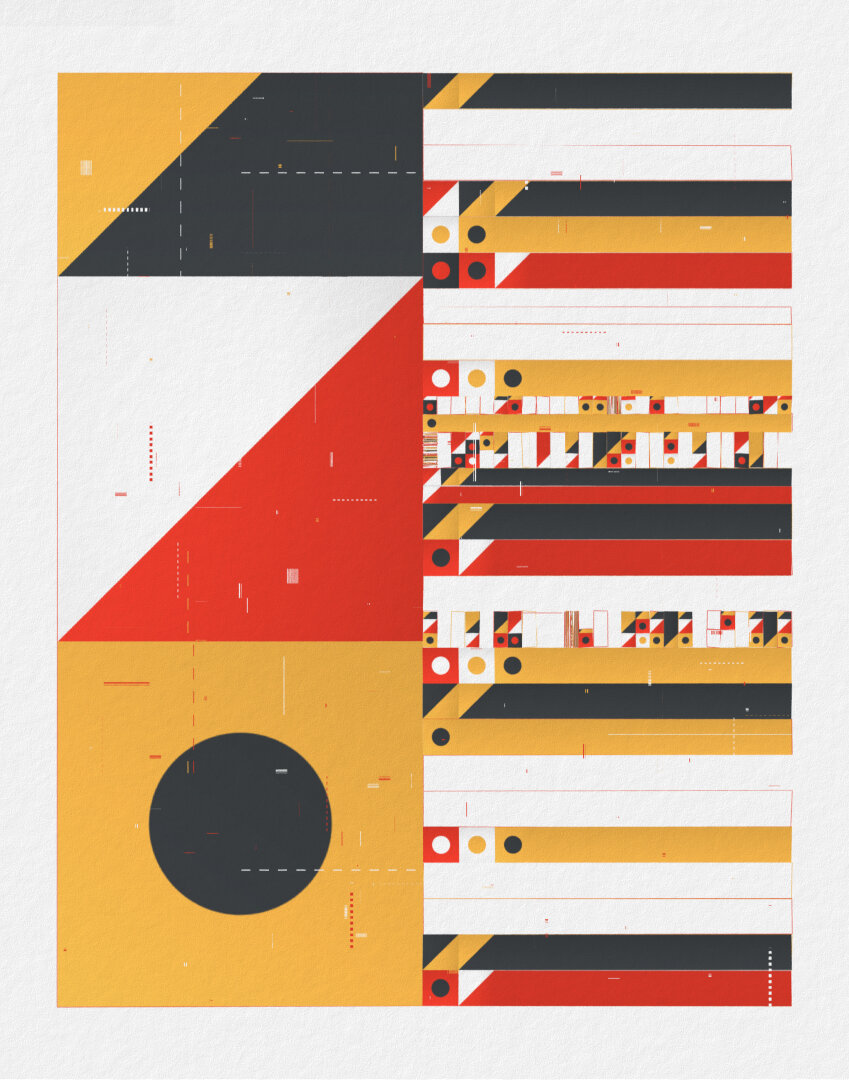Quadrature
Type
Generative Art
Tools
GLSL/WebGL
Date
May 2023
Edition of 250 tokens of on-chain generative art, released on gmStudio as NFTs.
You can explore the project live in this generator
Quadrature is designed as a generator of systems. Each mint opens an endless expanse of shifting forms to be discovered and explored interactively: the seed’s initial image soon morphing in tandem with its owner’s desire, as you alter its behaviour and appearance via numerous controls.
As a creative coder, I find that the discovery process of an algorithm and its potential variations is most enjoyable, and one of the aspects that makes generative art so engaging. Unfortunately, collectors are often far removed from that process once they mint a new collection. Quadrature is my attempt to bestow agency to the collector, whose every mint can be re-configured within a specified set of features, and whose structures and reconfigurations are dynamic and enjoyable parts of the composition.
Under this concept, a mint is not just a single piece, but a generator of artworks capable of yielding variations that the collector can discover and curate. But unlike projects that allow the collector to tweak parameters at will, the parameters of possibilities for a Quadrature are bounded by the features it acquires upon its minting. Its algorithm is embodied between an open-ended parametric set-up and a fixed art piece. Due to the constraints of on-chain generative art, every morphing has to be deterministic; a mint will always have the same initial state and morph across the same transformations. The amount of possible transformations, however, is virtually infinite.


This deterministic nature of on-chain art inherent to NFT technology is highly desirable in the context of provenance within both digital, and traditional, art markets. Yet the use of determinism is atypical in the creation of generative systems which are based on aleatoric processes. In the long tradition of computer-driven art, many artists have in fact employed indeterminism as an inherent property of their work. That involves a different kind of compositional process where the unknown, or even irreproducible, becomes part of the core language of the piece.


Quadrature may be seen as an attempt to capture the essence of these transcendent, indeterminate moments, suggesting motion over stillness and encouraging serendipity within a purely deterministic environment. I’m well aware that this aim remains ultimately ironic, given that the current on-chain paradigm for NFTs does not facilitate it.
Algorithm

In the mathematics of ancient Greece, quadrature meant determining an area in geometry using squares. I’ve adopted the term to illustrate the algorithm in this project, where specific areas of the canvas are computed with various ratios and either filled with solid colours, gradients and patterns, or left empty.
The compositions build on the tension between two underlying recursive systems. These independently compute their sub-spaces and are ultimately combined:
- System A subdivides the virtual grid without keeping track of initial areas (destructive process).
- System B partitions space and keeps track of computed parts (constructive process).
It is often easy to spot the two systems at play since one tends to result in large, ordered blocks, and the other in granular, chaotic elements. There is a simple purity in the reconfiguration of spaces, with the act producing a myriad of interesting elements, even when using simple components to manifest itself. It is often forgotten that generative coding produces systems, and systems are beautiful to dissect, revealing the algorithm itself.
Every time a re-configuration is triggered, the system updates its properties and morphs between the current state and a newly found one. Given the deterministic nature of on-chain art, this process proved to be technically challenging since the history of all the random numbers in the code needs to be accounted for at all times, as they are swapped seamlessly between transformations.